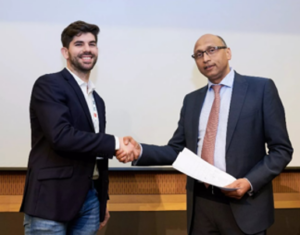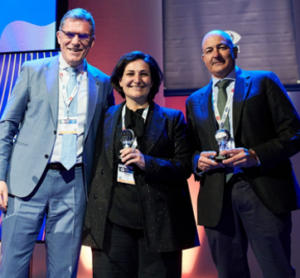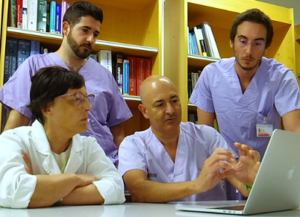Professor El-Omar has selected Professor Vicente Lorenzo-Zúñiga from La Fe University and Polytechnic Hospital, Valencia, Spain to do the next #GUTBlog.
The #GUTBlog focusses on the paper “Life cycle assessment of routinely used endoscopic instruments and simple intervention to reduce our environmental impact“ which was published in paper copy in GUT in September 2023.


Professor Vicente Lorenzo-Zúñiga writes,
“‘Going Green in Endoscopy: A Sustainable Step Forward’
Climate change is a pressing global issue, and healthcare systems, including gastrointestinal endoscopy units, contribute significantly to greenhouse gas emissions. Endoscopy units are responsible for a substantial amount of medical waste, with a significant portion being incinerated, leading to harmful emissions. Sustainable practices in healthcare can help mitigate the impact on the environment. In this research, we aimed to assess the environmental impact of routinely used endoscopic instruments and propose an intervention to reduce our carbon footprint.
Gastrointestinal endoscopy units are among the top producers of medical waste, with a considerable portion categorized as biomedical waste and subsequently incinerated. Simple sustainability interventions, such as educating healthcare teams about proper waste handling and disposal, have shown to significantly decrease carbon emissions.
The study involved a material composition analysis of biopsy forceps, polypectomy snares, and haemostatic clips from various manufacturers. We teamed up with our engineers to find out what kind of materials our endoscopic instruments were made of, and we performed several technical lab analyses. This enabled us to know the exact weight and type of material. Life-cycle assessments were performed using a free environmental footprint calculator software, OpenLCA. Then, we determined the carbon footprint from production, transportation, and end-of-life disposal. The “green mark” intervention involved identifying parts of the instruments that could be safely recycled and diverting them from high-temperature incineration. We assumed that not all of the instrument was in contact with the working channel, so part of the body and handle would be potentially recyclable.
We defined this “green mark” during thirty endoscopic procedures as a measurement 5 cm from contact with the working channel. We validated this green proposal during a one-week study by separating the potentially recyclable material and calculating the carbon footprint saved by this sustainability intervention.

The material composition of endoscopic instruments varied significantly among manufacturers, with some materials contributing more to global warming pollution. Carbon footprint calculations showed that the choice of manufacturer could significantly impact the environmental impact of the instruments. The “green mark” intervention, applied during a one-week prospective study, reduced carbon emissions by 27.44% and allowed for the recycling of 61.7% of the instrument’s total weight. The environmental impact of partially recycling snares, forceps and haemoclips for one year would be significant. The carbon emissions saved would be equivalent to heating a home for three years.
Understanding the material composition of endoscopic instruments is crucial in selecting more sustainable alternatives. Our proposed “green mark” intervention provides a viable solution to reduce the amount of biomedical waste and increase recyclable medical waste. While there are limitations, such as waste management policies and infection control concerns, this research lays the groundwork for developing environmentally designed endoscopy equipment.
Reducing the carbon footprint in endoscopy is possible through informed decision-making regarding instrument material composition and the implementation of sustainable interventions. By taking steps towards a more eco-friendly approach in endoscopy, we can contribute to mitigating the impact of healthcare on the environment. Embracing sustainable practices is not only beneficial for the planet but also a step towards a greener future for the medical field.”
Social Media
@VicenteLorenz19 Professor Vicente Lorenzo-Zúñiga
@iislafe La Fe University and Polytechnic Hospital, Valencia, Spain
Other co-authors: @p_lopezmunoz, @CabezueloRuben, @guivifel, @vicen_pons